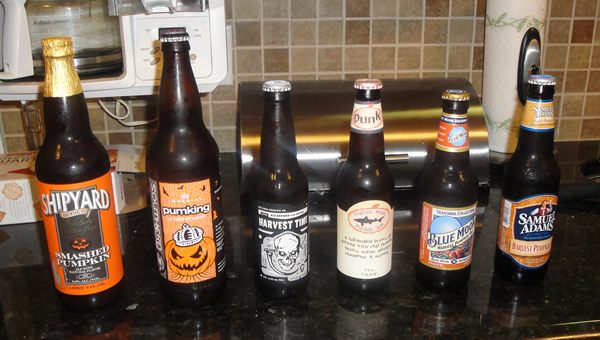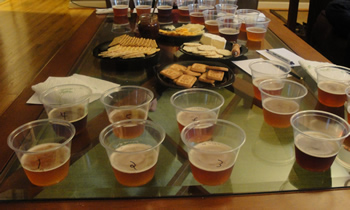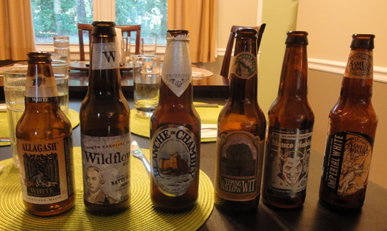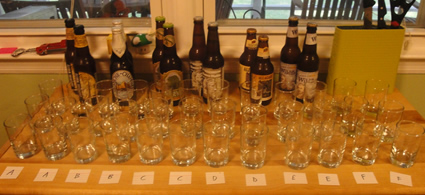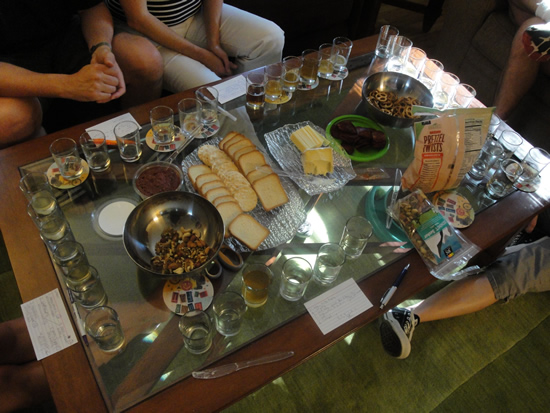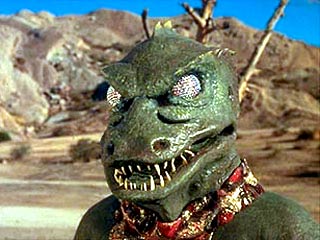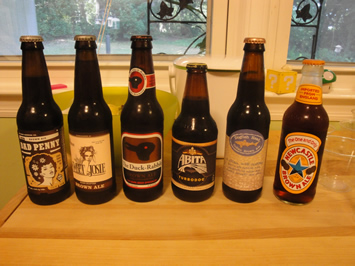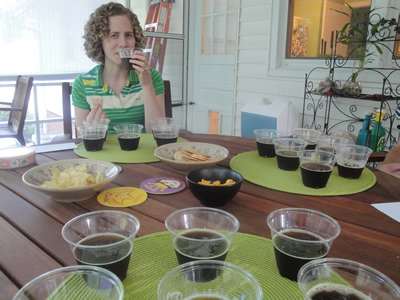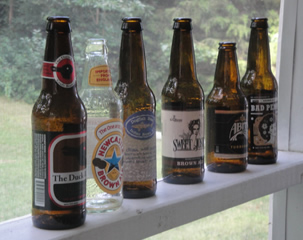 22. Space Seed. The classic Khan episode more appreciated today as a prequel to Star Trek II. (Though season one pre-dates Chekhov’s arrival on the ship and raises the question of how Khan would recognize him later on.) This one’s puzzling. It’s great but I have trouble with it. Good news first. It’s a well-structured episode and makes for great sci-fi, it’s tense and suspenseful, it has a spectacular guest character and good moments between the regulars. There’s a really interesting introduction to the apparently amok 1990s, which Trek writers predicted to be a time of eugenics and warfare, rather than the time of pogs and big round glasses that would actually come to pass. Shatner and Montalban provide take turns milking their lines, particularly when sharing scenes. The problem is that the whole McGivers-Khan relationship is so weird it’s almost too uncomfortable to watch. She’s a well-educated historian who immediately falls for Khan so thoroughly that she’s willing to betray the Enterprise and give up her entire life. (Not that she’s the first or the last Trek character to do either of those things.) Khan bullies and intimidates her, which she puts up with, introducing a creepy abusive relationship angle. It’s implied that Khan is irresistible, and obviously he’s a bad guy and she’s scared, but it largely comes across as him being the bad boy she can’t help but like. I guess when they got around to STII they made a point to ensure he was really sad about her passing, like they had a good situation after all. But sheesh. Anyway I should probably also pick on the way Khan takes over the ship. McGivers’ betrayal helps but it certainly relies on the Enterprise’s usual lax security: easy access to engineering, sensitive technical documents readily available on the ship’s computer, incompetent security guards. But it’s all set up well, too. Montalban’s performance is awesome, so Khan is very believable as a kind of unstoppable superman. Killer Spock line: “I don’t understand why it always gives you pleasure to see me proven wrong.” Overall: probably a 5 out of 5 except for the creepy stuff, depending on how your reaction to that.
22. Space Seed. The classic Khan episode more appreciated today as a prequel to Star Trek II. (Though season one pre-dates Chekhov’s arrival on the ship and raises the question of how Khan would recognize him later on.) This one’s puzzling. It’s great but I have trouble with it. Good news first. It’s a well-structured episode and makes for great sci-fi, it’s tense and suspenseful, it has a spectacular guest character and good moments between the regulars. There’s a really interesting introduction to the apparently amok 1990s, which Trek writers predicted to be a time of eugenics and warfare, rather than the time of pogs and big round glasses that would actually come to pass. Shatner and Montalban provide take turns milking their lines, particularly when sharing scenes. The problem is that the whole McGivers-Khan relationship is so weird it’s almost too uncomfortable to watch. She’s a well-educated historian who immediately falls for Khan so thoroughly that she’s willing to betray the Enterprise and give up her entire life. (Not that she’s the first or the last Trek character to do either of those things.) Khan bullies and intimidates her, which she puts up with, introducing a creepy abusive relationship angle. It’s implied that Khan is irresistible, and obviously he’s a bad guy and she’s scared, but it largely comes across as him being the bad boy she can’t help but like. I guess when they got around to STII they made a point to ensure he was really sad about her passing, like they had a good situation after all. But sheesh. Anyway I should probably also pick on the way Khan takes over the ship. McGivers’ betrayal helps but it certainly relies on the Enterprise’s usual lax security: easy access to engineering, sensitive technical documents readily available on the ship’s computer, incompetent security guards. But it’s all set up well, too. Montalban’s performance is awesome, so Khan is very believable as a kind of unstoppable superman. Killer Spock line: “I don’t understand why it always gives you pleasure to see me proven wrong.” Overall: probably a 5 out of 5 except for the creepy stuff, depending on how your reaction to that.
Trek tropes:
- Strange probe encountered in space
- Recent Earth history will always be relevant
- Even in interstellar space, the best way to resolve problems is with your fists
- Enemy allowed easy access to highly sensitive area of the ship
- Guest star abandons life for new existence
23. A Taste of Armageddon. Straightforward Kirk-says-humanity-rules episode. The crew comes in contact with a civilization engaging in an endless war, only it’s not a real man’s war, like Kirk would endorse, what with the trenches and dying in the mud, but something with computers or some crap. The two combatants have agreed that they’ll just simulate the war, and whomever the computer says died has to report to a disintegration chamber. That way, the war doesn’t take the whole culture out with it. I guess it adheres to a sort of bizarre logic. Spock even kind of admires it. But you wonder why the heck they’re bothering to fight. If you respect the other culture that much, why are you fighting? They step over the actual cause and nature of the dispute, and what it’s bothering to accomplish anymore, which is kind of an important detail, you know? Basically the episode is Kirk being pretty angry about the whole idea and working to subvert it. And I guess…we’re not doing the Prime Directive anymore? Later maybe? OK. Killer Spock line/ruse: “Sir, there’s a multi-legged creature crawling on your shoulder.” Overall: 3 out of 5.
Trek tropes:
- In the future, computers are magic, but still make teletype sounds
- Spock displays Vulcan superpower never really seen again
- Invisible Space Powers
- Violation of Prime Directive
24. This Side of Paradise. (AKA The one with the spores.) The Enterprise visits a colony planet where they fear everyone will be dead on account of its exposure to deadly space rays. Instead they find a surprisingly functioning colony with perfectly healthy people. Only they are all a little too healthy–no one has even the slightest malady and things like removed appendixes have grown back. Kirk ponders, “How could they be alive?” Sulu chimes in uselessly, “Is it possible that they’re not?” WHAT DOES THAT EVEN MEAN. The secret is discovered soon enough, as crew members start running into some native spores, which gives them each a case of the sillies. McCoy is particularly affected, as he becomes a gross caricature of a southern doc who wants only to be lazing about under a tree downing mint juleps. But Spock gets the worst of it. He ends up frolicking with the colony’s only woman and hanging upside down from a tree branch, giggling. So everyone under the influence decides the slow farming life is perfection, and they start donning green jumpsuits and skipping out on their Federationly duties. Of course Kirk is the last to succumb to being spored, so he ends up being the one lonely guy back on the ship who just doesn’t feel like partying. He rants that perfection isn’t all that perfect, because what is man good for without challenges, without ambition? This angry resistance turns out to be the seed uh, root? SOURCE of his ability to fight off the spores, as he discovers that strong emotions counteract the effect, because of course they do. He tries to get Spock back first, resulting in a glorious scene of Kirk hurling all manner of insult at Spock for a good cause, until he’s riled up enough to take a swing and Kirk and break the spores’ spell. Then they concoct a plan to bathe the colony is some kind of subspace emotion beam to break everyone else. It works great: everyone gets all mad for a few minutes (Sulu and another guy get into a shovel fight, like, immediately) until their heads clear and everything resolves. All in all, it’s a fun, silly episode, though not terribly new territory for the series. Maybe the most common plot in the show is: everyone gets some kind of space madness for a while, only Kirk and/or Spock can resist because they’re so darn awesome, then they fix things.
A few observations:
- Not a banner episode for female characters. There is evidently only one woman in the entire colony, and even after she’s de-spored she acts basically the same. Which is to say, the spores make you all girly and lovey, so if you’re already a girl, well, it doesn’t really matter if you’ve got spores or not.
- Spock trivia: (1) He reveals he has an unpronounceable other name. (2) The “Vulcanian” Watch continues, as this is still the preferred term for his race. Not sure when they become simply “Vulcans” but I think it’s pretty soon.
- I was sure this would be a “lighthearted banter ending” episode but it ended on a surprisingly morose tone with Spock’s “For the first time, I was happy” line. I don’t think that even makes sense. Usually Spock is deeply embarrassed by emotions. I guess that’s not established yet. Or it’s a “Vulcanian” thing.
Killer Spock line: “Emotions are alien to me. I’m a scientist.” Because…scientists are actually a non-emotive alien species? Better than any line might be his goofy smile when he first encounters Kirk after being spored. Overall: a nice mix of science mystery and silly. 4 out of 5.
Trek tropes:
KirkSpock old flame- Only Kirk can truly make command decisions
- Even in interstellar space, the best way to resolve problems is with your fists
- The indomitable human spirit conquers all
25. The Devil in the Dark. I haven’t been too conscious of each episode’s setting, but it’s hard to ignore the environmental transition this time. After the last nice sunny outside episode, we spend this whole hour in a cave. The dreary atmosphere matches the set. It starts with a security guy taking over his shift, seriously concerned that he won’t even live through it because a “monster” is on the loose. His boss assures him he should be OK, but of course he’s killed before Boss Man even gets out of the cave. The Enterprise arrives to help, and the deaths are gruesome enough by description–guys get “burned to a crisp”–but McCoy piles on the horror by discovering that’s it’s more like they’re hurled into acid and corroded. So yeah, the whole situation is pretty terrifyingly icky, but the setup helps shape what turns out to be an outstanding episode. Regular Trek viewers can probably guess the gist of the plot, as Kirk and Spock eventually corner the creature and gain an understanding of it to resolve the situation. But the execution is the real strength here. Similar to “Arena,” this is an episode I really dig but I wonder if it works for a modern audience. I don’t really care about TOS’s cheesy effects, but to buy into this episode you need to get past the horta’s appearance, because it looks like a gross rubbery blanket spackled with charcoal and frosting. It’s undeniably weird but it actually works, I think. It makes it seem seriously foreign. The latter half of the episode, where they actually communicate with it, becomes interesting for its weirdness, because you really don’t know what to expect. I’m tired of episodes like “The Squire of Gothos” where they’re trying to deal with some spacey nutball of marginal sanity. This is just good sci-fi.
Miscellaneous notes:
- Spock really likes this silicon ball that the head miner is keeping in his office. Of course, part of the reason he’s fascinated with it is because he correctly guesses what it really is, but the guy can’t keep his hands off it.
- Love this incredibly scary scene with Kirk lining up six redshirts to send them into the monster’s cave and telling them that 50 men have died and he doesn’t want any more death. “Don’t die, redshirts! That’s an order!”
- Fantastic conversation between Kirk and Spock to set up their motivations as they venture into the caves. Spock believes the creature is the last of its kind, so he’s itching to capture it rather than kill it, even though he acknowledges that the most logical action is to kill this mind-bogglingly dangerous menace. So Kirk starts trying to give him different jobs to keep him out of the way, but he can’t win a logical argument with Spock, who even goes so far as to cite the (what he claims to be) accurate (and very long) odds of them both being killed at once.
- And as they venture into the deadly caves where 50 men have been burned to crisps, I can’t help but realize that this episode really, really challenges the accepted fiction that it’s necessary for the Captain and First Officer to be on away missions.
- Lately I’ve just been watching the show on Netflix rather than get out the DVDs. It saves a bit of hassle and the picture’s a bit better. But Netflix has the restored versions, in which some of the special effects are updated. They tend to be hands-off with the updates, only tinkering with scenes without actors, such as the scene transitions where it’s just the ship orbiting a planet. They certainly could have gone all-out and changed rubber-suited creatures to CGI or something. I’m sure there was little monetary reason to go to the trouble, but even if it was just an aesthetic decision, it was the right call, to my thinking. But I’m a Muppet Yoda guy, too.
- It’s not really clear why the horta doesn’t immediately kill Kirk when they first encounter each other, but a lot of the believability of the episode hinges on this. Kirk is seriously not alarmed by the thing being ten feet from him even though it has instantly killed every other person it’s come in contact with. The positive way to interpret things is that this particular horta has the same Captain’s intuition that Kirk does, and can sense that working out a resolution is the right thing to do.
- The space miners turn out to be very understanding guys in the end. They are totally fine with letting the horta live in peace when they could easily just kill it. Because let’s face it: at least in modern times, mining and similar industries are not exactly open-minded when it comes to environmental concerns standing in the way of their business. Although certainly the huge profit potential of the horta helping them out sways them. I guess if endangered owls sawed down trees and after nesting in them, the lumber industry would like to partner with them, too.
Killer Spock line: “I have already given Dr. McCoy sufficient cause for amusement. I would prefer to cogitate the possibilities for a time.” Overall: Good suspenseful skiffy episode with some surprisingly advanced ideas, even if they do take a back seat to the suspense and horror bits. 5 out of 5 from me but an open question whether a non-Trek fan would find it interesting or just too weird.
Trek tropes:
- Anonymous redshirt killed
- Lighthearted banter to close episode
